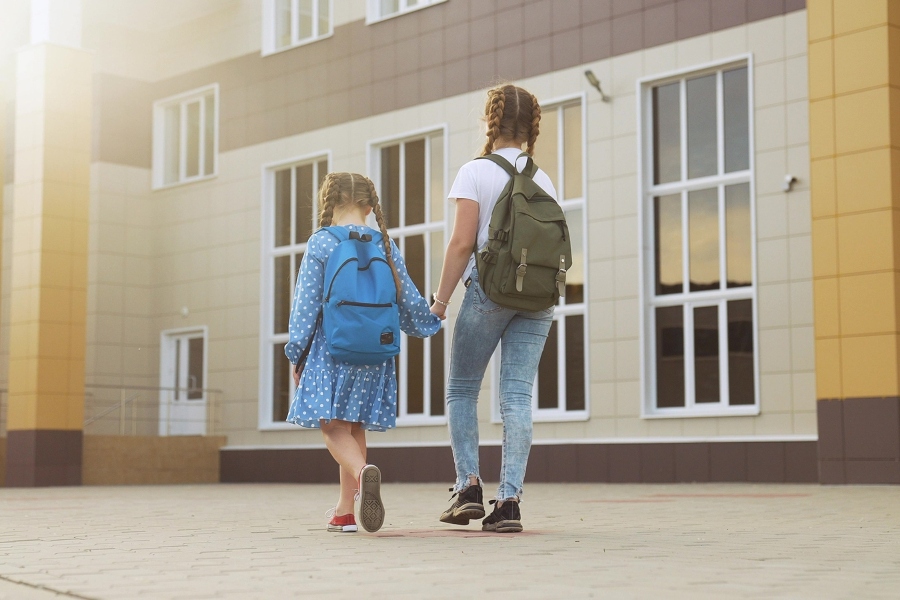No types of school abuse are ever acceptable, of course – not even a little bit. But it’s even worse when it occurs due to the behavior of an adult. Whether it’s a teacher or someone else, if abuse occurs in what should be a safe place, that person – and any others who played a role – must be forced to face full accountability. This means that all responsible parties must not only criminal charges but civil penalties as well.

Unfortunately, the child injury attorneys with Sand Law LLC have a great deal of experience in these kinds of cases. We have a deep understanding of how to determine all the parties that contribute to the different types of school abuse. We also know how to make sure they pay dearly. If you would like to see what your rights are and how we may be able to help you, just give us a call at 651-291-7263 or contact us online.
The following is some information on the four most common types of school abuse, as well as what to do if you suspect your child has been a victim.
1. Physical Abuse
There are times when a child will be hurt in the normal course of attending school. They could, for instance, suffer a serious injury on a playground due to dangerous equipment, lack of supervision, or some other reason.
But of all the different types of school abuse, physical abuse on the part of an adult can be even more devastating. School personnel will sometimes kick, shake, slap, or even bite, shake or throw a child. This is much different from using physical force to restrain or correct a child or to keep that child from harming another. This is allowed under Minnesota law as long as the force is reasonable.
The problem arises when an adult crosses the line from reasonable punishment to flat-out abuse. If you notice any of the following when your child comes home from school, there’s a chance that abuse is taking place.
- Bruises
- Unexplained swelling
- Lacerations
- Marks on the back, head, chest, or anywhere else on the child’s body
- Sudden changes in behavior, such as acting out aggressively or being withdrawn
2. Emotional Abuse
This typically involves a pattern of behavior that can damage a child’s sense of self-worth or even their emotional development. Emotional abuse can include threats, continual criticism, the withholding of guidance, and more. The challenge is that it can be difficult to prove without solid evidence of mental harm.
Examples of emotional abuse include:
- Ignoring the child by either refusing to look at them or refusing to acknowledge them in any other manner.
- Actively rejecting the child’s needs, such as refusing to touch them or denying their needs in another way.
- Isolating the child from others on a consistent basis, preventing them from having any social interactions with their peers or other school personnel.
- Encouraging the child to participate in dangerous, illegal behaviors.
- Verbally assaulting the child by shaming, belittling, or ridiculing the child day after day.
3. Neglect
According to the National Child Abuse and Neglect Data System, neglect involves the failure to provide appropriate care despite having the ability to do so. It could encompass aspects of other types of school abuse, such as physical and emotional abuse. A teacher or other school employee may fail to provide food or attend to a child’s educational needs. They may fail to provide the psychological care the child requires.
Neglect at school can sometimes result from teachers who simply don’t have the proper training to be able to cope with students or are stressed from overwork. But whatever the reason this might be occurring, there’s simply no excuse. The potential long-term consequences of neglect can be severe.
4. Sexual Abuse
One of the most heinous types of school abuse, sexual abuse, includes behavior such as fondling a student’s genital area, indecent exposure, exposing the child to pornography, and many other activities that are even worse.
As you might expect, the effects of sexual abuse can last well into adulthood. Victims may be unable to trust anyone – even those they love the most – and may also experience feelings of guilt. In many instances, they may even abuse themselves physically. Sexual abuse victims will sometimes suffer from profound depression, completely lose their self-esteem, and also exhibit anti-social behaviors.
Signs of sexual abuse in a small child can include the following:
- Fear of certain people or places
- Bedwetting
- Showing anxiety when around any strangers
- Eating disorders
- Withdrawing from loved ones
- Nightmares or difficulty sleeping
If the child is older, they may experience the following symptoms:
- Poor performance in school
- Drug abuse
- Aggressive behavior
- Promiscuity
- Thoughts of suicide
- Early marriage or pregnancy
What to do if Your Child is Abused at School
As difficult as it may seem, if you have a reason to believe your child is being subjected to any of the different types of school abuse mentioned above, it will be critically important to stay calm. Trying to exact revenge on those you believe committed the abuse will do nothing but make a bad situation even worse.
The first thing you’ll need to do will be to contact your local authorities and report your suspicions. You should also contact an attorney to determine your possible options when it comes to obtaining compensation for the harm your child has suffered. This could mean suing the person to blame, as well as the school – and possibly even the school district as well.
Contact Sand Law to Schedule a Free Case Evaluation
A child injury attorney with Sand Law is standing by to provide detailed information on what your legal options may be and how we may be of assistance. Once we gather the facts, we’ll do everything we can to help you achieve the justice you seek.
Please don’t hesitate to get in touch with us for a free evaluation of your case. You can give us a call at 651-291-7263, or you can use our online contact form.

